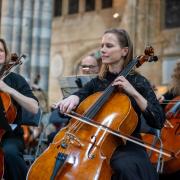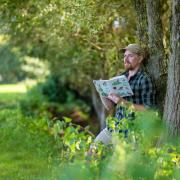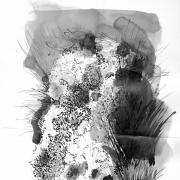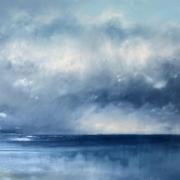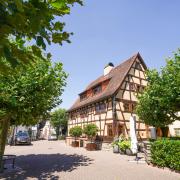Grandeur, natural beauty, simplicity and 'slow living' - you can find it all on Lundy Island. Words and pictures by Jan Barwick
What is it about Lundy - a wild, 400ft-high granite lump just three miles long and half a mile wide, located where the Bristol Channel meets the Atlantic - that has people going back there again and again?
If you like scaling vertical surfaces, then it's obvious - the island has some of the best climbing sites in the South West. If you're keen on birds, then you'll be in paradise - more than 400 species have been recorded; it's a stop-off point on the migratory route and around 40 species breed here, including Manx shearwater, guillemots, razorbills and the delightful puffin, the bird that gave Lundy its name (Lundy is Norse for puffin island). If you're a diver it will be on your list of must-visit places - the island's waters were the country's first designated Marine Nature Reserve and the marine fauna is extensive, with many rarities as well as wrecks to explore.
But that doesn't take into account all the hundreds of other people who make regular and repeated trips to the island. Perhaps the word that most frequently figures when you ask visitors about the particular attractions is 'escape'.
Nigel Dalby, who manages the island's shop, sums it up with a story of one East End teenager who came with his family to stay. Bemused that there was no knife crime, gang fights or even a policeman, horrified by the lack of TV or mobile phone signal, the lad's initial response to the island was "Is this it? Rubbish, innit!"
"But in 24 hours that lad had 'got' Lundy," Nigel said. "He went snorkelling, he found the letterboxes, he did all the simple things, and at the end of the week he told me how keen he was to return. He'd got a proper childhood back."
Life on Lundy is very different from the mainland, and is lived at a much slower pace. There is no traffic, apart from a few tractors and four-wheel drives used to ferry stuff from the landing quay up to the village (and your visit starts with a lengthy and steep uphill climb), so you're reliant on your legs. There is just one shop and a pub. The visitor accommodation, although charming and comfortable, does not fit into the 'luxury' category. There is hot water for showers or baths and fridge/freezers for your food, but as far as electrical appliances go, that's it. Resources on the island are limited and need to be carefully conserved. Electricity is provided by three generators, which are usually turned off after midnight, so take a torch with you. Water comes from the various ponds and rainwater catchment sites on the island and, although drinkable, is quite alarmingly brown. There's no internet access, no mobile phone signal. Newspapers only arrive on the days when the boat visits. In effect, for the period of your stay, you're divorced from what's going on in the world outside.
With little in the way of conventional entertainment laid on, you have to make your own. What's on the list?
To start with, the whole island is there to discover. You can wander virtually anywhere, provided you shut gates behind you. Once up on the plateau, the walking is fairly level and you could circumnavigate the island easily in a day, although most people cover far less ground because there's so much to stop and look at. For starters try climbing to the top of the Old Light, a dizzying spiral up steep stone steps to the lamp chamber. The lamp has been removed and replaced by a couple of deckchairs, and you can sit there and gaze around over the whole island, spread below like a 3D map. Or scramble down the steps to the Battery, a complex of tiny buildings overlooking the wild west coast, and once occupied by two families with ten children between them. Their task was to fire off a cannon every ten minutes in foggy weather as a warning to shipping (the light on top of the island was hidden in the fog and deemed useless).
For the island's softer side, try the east coast. Choose a low tide to walk up to Brazen Ward or Gannets' Bay, where seals are often hauled out on the rocks below. If you're lucky, Sika deer, a 20th-century introduction, may break cover and scamper off in front of you. You may also spot Soay sheep, goats and Lundy's own breed of pony - originally from the New Forest but now a distinct island race following years of selective breeding.
If you've got children, or if you are a child at heart, then buy the letterbox kit from the shop. There are 28 boxes containing message pads hidden around the island, much like those on Dartmoor. The kit contains everything you need to track them down, and the hunt, which takes you all over the island, can be quite compulsive.
A wealth of wildlife
Lundy is a wildlife superstore and there's plenty of scope to find out more about it, with Warden Nichola Saunders and Assistant Warden Sophie Wheatley at the forefront of visitor education. Free warden-led guided walks take place all year round, and there are evening slide talks in the pub about the wildlife. In the summer they run rocky shore rambles, snorkelling safaris and seabird walks from May to July, when the birds are breeding. Boat trips around the island offer a different outlook and you may be lucky enough to have a close encounter with dolphins, porpoises or even basking sharks.
Entertainment is more of a challenge if it's wet. All the properties are equipped with games and books, and the logbook, a diary in each dwelling to which all visitors are invited to contribute, makes interesting reading. Hub of island life, though, especially in wet weather, is the pub, the Marisco Tavern, which is open all day. Here you can buy breakfast, lunch and dinner, all very reasonably priced (£6.95 for the evening specials). It's not gourmet, but wholesome and robust, and there's plenty of it. If you don't want to eat, you can read, play games or just sit around and talk. Lundy certainly encourages conversation.
Where to stay
Lundy is owned by the National Trust and managed by the Landmark Trust. Its whole economy is based around visitors, for whom there are 23 letting properties, some of which are very quirky indeed. There's also a campsite for a maximum of 40. Visitors come throughout the year, even in winter, when the island is about two degrees warmer than the mainland. Frosts are virtually unknown and it's possible to sit outside in your shirtsleeves in February.
Properties range from The Barn (hostel-style accommodation for 14), through the gracious stuccoed Millcombe House which sleeps 12, to the Radio Room and Old Light Cottage, both for singles. How about a castle, or a converted piggery, or the old lighthouse, where the keeper's quarters have been converted into two separate flats? Tibbets, the most northerly property and a mile-and-three-quarter walk to the village - a long way if you forget the teabags - is an old Admiralty signal station, with bunk beds and no electricity. "But it's one of the most popular," says Nigel. "People love the remoteness." And that, in a nutshell, is probably Lundy's secret. It offers something quite different, something on a more spiritual level, removing you from so many of the superfluous trappings of 21st-century life and throwing you back on your own resources. Grandeur, natural beauty and simplicity - an uncomplicated recipe that lures you back, not to do, but just to be. We could all do with a dose of it.
GETTING THERE
From April until the end of October the MS Oldenburg travels between Lundy and either Bideford or Ilfracombe on Tuesdays, Thursdays and Saturdays. From November to the end of March a helicopter service operates on Mondays and Fridays from Hartland Point. For more information contact the Lundy Shore Office on (01271 863636.
NEED TO KNOW
Lundy's shop stocks everything you need for your stay and will endeavour to order special requirements if sufficient notice is given, but this is dependent on the weather.
No pets are allowed except guide dogs.
When you book your property, book your transport at the same time. The fact that you have accommodation doesn't automatically give you the right to a passage.
Waterproof clothing and good boots are essential.
Take binoculars, or hire them on the island (£10 per week, £5 per day).
Visit the South West Wedding Show - 28th February and 1st March 2009



